Abstract
Since the dynamics of businesses are broad and challenging, they require stringent management strategies to regulate them. In recent decades, the corporate world experienced a series of challenges, as some multinational firms plummeted while others triumphed. The conditions are even worse in the telecommunication and technology companies, which are dependent on the emerging changes in the volatile markets.
Since the emerging markets are very volatile, it is difficult for the telecommunication and technological companies to adjust market forces effectively. What is evident is that the preferences of consumers change with the advancement in technology. Failure to realize the trend of the consumer preferences halted the dominance of BlackBerry’s smartphones in the mobile phone industry from the year 2011.
Quandaries in the top management and failure to enhance innovation in the company resulted into plummeted sales and loss of reputation in the markets, which greatly affected the dominance of the BlackBerry Company. Using Soft Systems Methodology in the analysis of the prevailing situation and recommending actions for the company to integrate, BlackBerry can restore its initial market reputation. The approach involves a systematic way of analysing a problem associated with the performance management and provides a possible means of restoring the performance.
Introduction
As corporate competition continues to intensify, firms continue to experience various management challenges that affect their progress and market reputation. In recent decades, the corporate world has experienced a series of challenges, which have made some multinational firms to plummet while others to triumph (Reed, 2006). BlackBerry Limited is one of the modern phone technology firms that have experienced management issues, which have led to its collapse as a corporate entity. BlackBerry has been among the most renowned phone technology companies, however, since 2011, the company’s sales and overall market reputation has plummeted dramatically.
Appearing in the earliest times when phone technologies were growing, BlackBerry dominated the smartphone industry for a considerable period, but has failed to recover against Apple. It is important to understand that although BlackBerry is facing such serious economic downbeats, systems thinking approaches may assist it to recover its lost performance. Therefore, this case study seeks to employ the systems thinking approach in designing a strategy that would assist BlackBerry to restore its stature in the realm of smartphone technology.
Background Situation
BlackBerry has been among the most renowned telecommunications and mobile phone service provider, since its inception in 1984. For the past five years, the company managed to dominate the mobile phone industry because it was competitive in designing modern smartphones (Miller, 2013).
However, since 2011 the company seems to have lost its market reputation and experience extreme downbeats in sales, as the general sales gradually plummet. Recently in September 2013, BlackBerry reported a net loss of about $965 million (Hicks, 2012). The company’s management ascribed the loss of meagre revenue from its smartphone market performance. Such collapses in the net sales of its major telecommunication devices, including smartphones have contributed to the detrimental financial crisis to the BlackBerry Company. Following such incidences, the company announced that it would scrap more than 4,500 existing jobs in the company structure (Miller, 2013). While BlackBerry plummets in its market reputation, its closest market competitor Apple tripled BlackBerry sales by 9 million.
The company had already built an extensive international market reputation and, since such downbeats acted as a drawback to the BlackBerry operations, the public has raised questions into what transpired in the company (Miller, 2013). Following public pressure and the urge to restore its market reputation, BlackBerry Company has been seeking ways of restoring its initial business performance and means of transforming its management. The few strategies towards change have suddenly resulted in an improved market reputation of BlackBerry and an increase in its market share (Hicks, 2012).
The findings of the backdrop to the prevailing problem reveal that management of BlackBerry played an important part in the dwindling of the company. Recent investigations into the BlackBerry misery indicate that such turnarounds resulted from inadequate modern innovation to produce elegant telecommunication devices and improper management skills that hampered its business performance (Hicks, 2012). Decision-making disparities amongst BlackBerry top management, including the Chief Executive Office over the production of touch screen phones contributed to the downfall of the company.
Purpose of the Study
It is normally uneasy to keep a steady rise and maintain dominance of the market in the competitive business world that seems unpredictable and constantly changing (Reed, 2006). Such business issues predispose businesses to risk of downfall. Modern companies experience varied corporate management challenges and a downfall among other miseries, is a common misfortune in an organization that is serving in a highly competitive and challenging business world. Reed (2006) asserts that, “leaders operate in the realm of bewildering uncertainty and staggering complexity and success in the contemporary operating environment requires different ways of thinking about problems and organizations” (p. 10).
While a range of problem-solving strategies for performance management have been overtly applied in different organizations, it is important to note that systems thinking approach is also vital (Kravchenko, 2013). Soft Systems Methodology (SSM) is one of the modern and effective problem-solving techniques. The main intent of this report is to apply SSM in BlackBerry to help in solving the prevailing performance management quandary.
Stakeholders
The Soft Systems Methodology involves a systematic approach that members of the management board integrate into an organization. The SSM is important because it involves deep insights and rigour evaluative through using multiple goals, different logics, various views and perspectives, and different stakeholders (Kotiadis, 2007). Major actors in the SSM approach are the people responsible for developing the system and those who will oversee its operations throughout the implementation process (Kotiadis, 2007).
The SSM development process requires an involvement of different stakeholders as desired by the operatives (Kotiadis, 2007). In the case of the BlackBerry Company, the top management members are the most important stakeholders that will spur the development of the system and oversee its operations throughout the implementation phase. The main people in the system development are the executive members and managers of different departments of the BlackBerry Company.
Viewpoints and Perspectives
The SSM approach involves viewpoint or perspectives that drive the objectives of the system in transforming the organization through a series of presumed changes (Anderson et al., 2006). Understanding the perspectives and viewpoints that involve plausible intended actions that an organization seeks to integrate and revive the performance of the company is an important step in the development of the SSM approach. In understanding the perspectives and viewpoints, it is important to know the mnemonic CATWOE first (Williams, 2005).
In the mnemonic CATWOE, customers are the people expected to benefit from the intended transformations, actors are the individuals to facilitate such transformations, while transformations are the real process from the beginning to end (Anderson et al., 2006). Weltanschauung is the component that gives transformation credible meaning, as the owner is an individual answerable to the transformation, while the environment is the indirect influence of the control system.
Systems Failure Approach: Pre-Analysis
Soft System Methodology is a systematic strategic tool that organizations can use to diagnose and tackle problems through designing new systems of pluralistic ideas and values (Kotiadis, 2007). The pre-analysis section in the SSM involves developing the richest picture that presents the problematic situation in a diagrammatic manner.
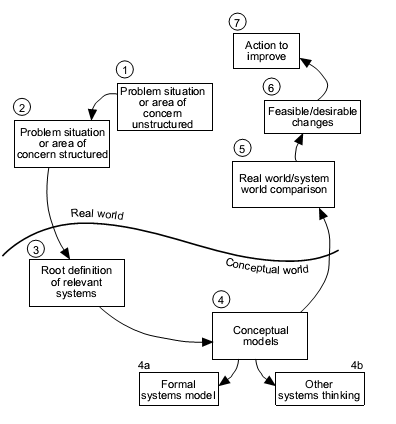
Rich Picture
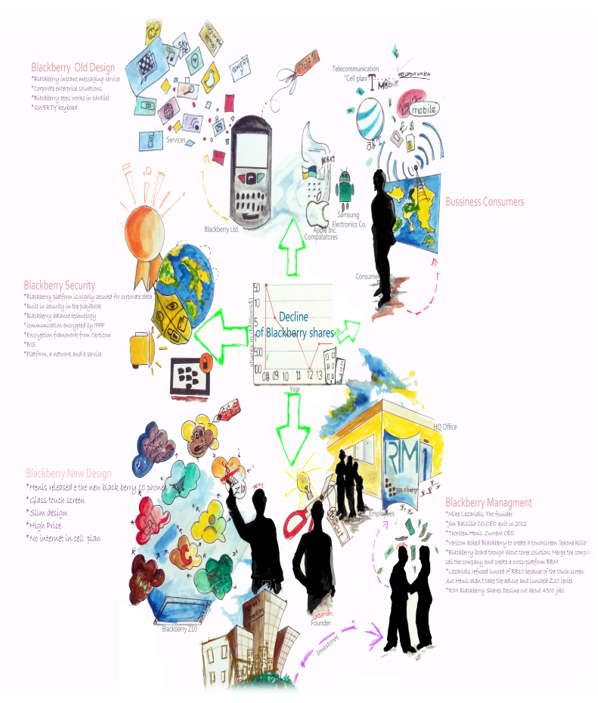
Explanation
Drawing the rich picture is the first approach in the SSM technique to demonstrate the diagrammatic representation of the problem and the association between variables that contributed to the problem. Wilson (2008) states rich picture offers an appropriate analysis of a case study because “it presents organizational entities of interest, the relationship between them, roles apparent significance, issues, and areas of conflicts” (p. 35).
The rich picture depicts how different forces in the case study interact and contribute to the occurrence of system failure. From the rich picture, it is evident that many factors contributed to the decline of the Blackberry shares. Hence, the spray diagram in necessary to provide additional insights into the issues that led to the decline of BlackBerry shares. Therefore, figure 1 is the rich picture, which depicts the BlackBerry situation. The chart presents the areas of concern, which are the problematic variables that cause system failure.
Spray Diagram
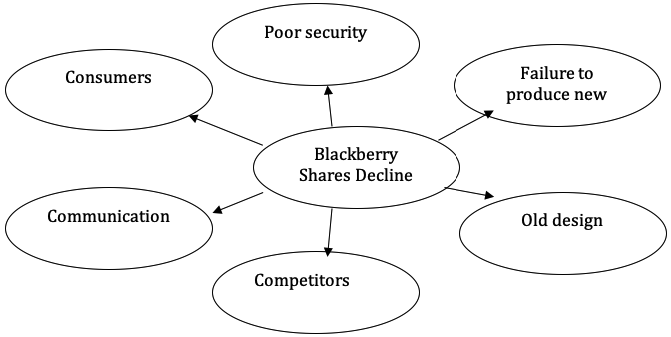
Explanation
The above spray diagram demonstrates the contextual situation that describes how different factors contributed to turnarounds of the BlackBerry Company. The above spray diagram helps the SSM approach to organize associated concepts or elements concerning the problem, and the association between them. The above spray diagram, demonstrates the relationship between problem causative elements and the central problem. Decline in the shares of the BlackBerry Company involved a continuum of interrelated aspects like competitor pressure, inability to develop new designs, changed consumer perceptions and broken security systems. This means that for management to revive BlackBerry, it must undertake massive reforms in these aspects because they cumulatively contributed to the system failure.
Relationship Diagram
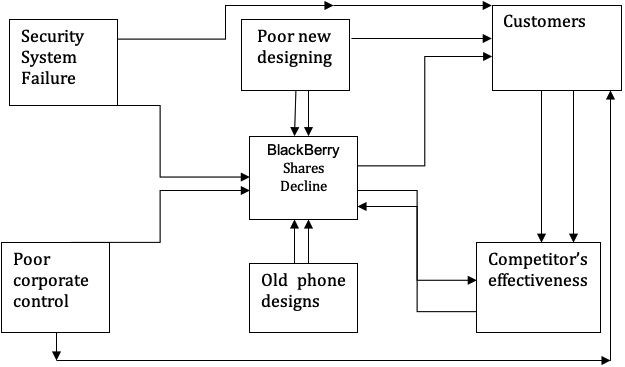
Explanation
SSM is an integrative approach that involves indicating the prevailing relationship between concepts and issues just as in the case of spray diagram. SSM is a dynamic approach that involves several diagrammatic models that indicate various interrelationships that reveal the connections associated with the problem.
Multiple Influence Diagram
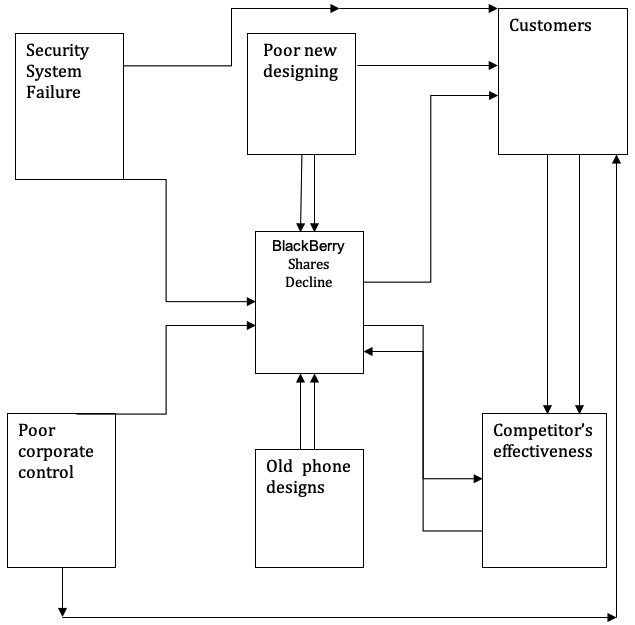
Explanation
The SSM approach contains an analysis of multiple goals, multiple perspectives, and different logics. A multiple diagram can demonstrate a relationship between the concepts and aspects associated with the problem identified. The multiple influence diagrams above represent the association between aspects and concepts that contributed to the collapse in the sales and shares of BlackBerry.
Systems Failure Approach: Systems Modelling
I/O Diagram
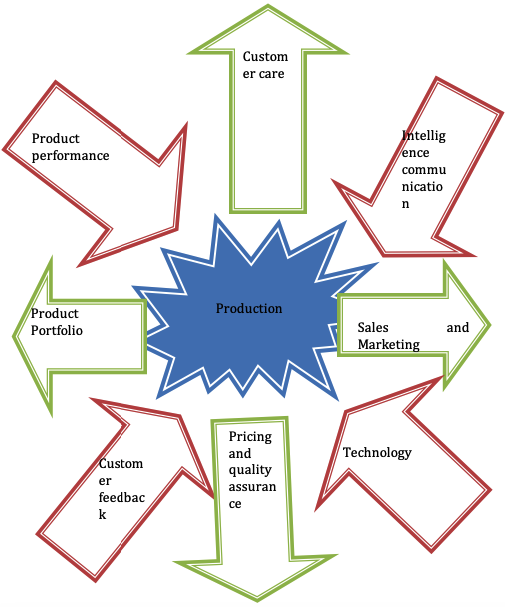
Systems Map
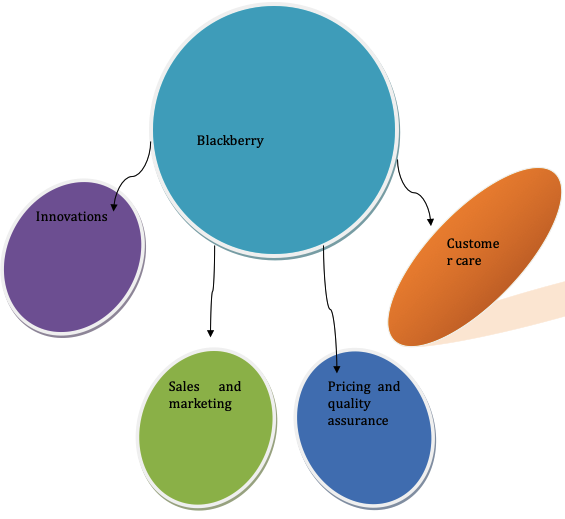
Influence Diagram
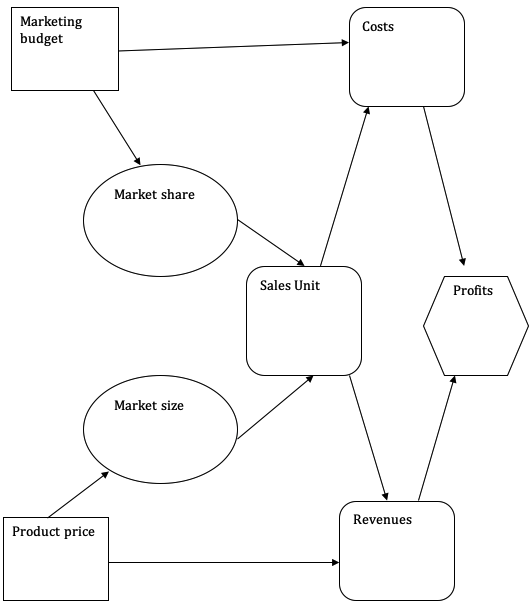
Formal Systems Model
This is the final section of the SSM approach, which involves building the system from the system conventions. It entails developing the root definitions and describing the most important activities that are essential to carry out the transformation. The transformation (T in COTWOE), as previously mentioned, is the entire process in the system that includes the starting point to the end of the process. The SMM approach consists of the root definitions and important systems that the company should adopt to recover its performance management. SMM suggests the development of different perspectives that the analysis can extract from the situation as expressed in the rich picture.
Using the Customers, Actors, Transformation, Weltanschauung, Owner, and Environment (CATWOE) mnemonic technique, the SMM model will have the following transformation components. In the mnemonic CATWOE customers, are the people expected to benefit from the intended transformations, actors are the individuals to facilitate such transformations, while transformations are the real process from the beginning to end. Weltanschauung is the component that gives transformation credible meaning, owner is an individual answerable to the transformation, while the environment is the indirect influence of the control system.
Reliability: Root Definitions
Through the SSM approach, the company will provide a series of transformation elements as suggested in the mnemonic CATWOE. CATWOE: the company will provide reliable services (Weltanschauung- W) to its customers that depend on a fault tolerant system (Transformation-T), to keep the product clients (Customers-C) satisfied by means of the latest technology (Environment- E), which now has invested in the Information Technology Department (Actor -A) in the BlackBerry Company (Owner- O).
Table 1: CATWOE for the reliability in BlackBerry.
Environment (E) Criteria
Table 2: E’s criteria for the reliability.
Security of BlackBerry: Root Definitions
The company will integrate a security system (W) by using encryption key and data protection act (E) through its IT department (A), which enhances safety of customer’s personal data (T) to make the purchasers, clients or simply users (C), become loyal to BlackBerry (O).
CATWOE for Security
Table 3: CATWOE for the Security.
Environment Assessment Criteria for Security
Table 4: E’s Criteria for the security.
Conceptual Model for Security
Phone Designing: Root Definitions
The IT department of BlackBerry (O), through the developed system, should be responsive to modern technological trends (W) by improving innovative designs that satisfy consumer needs (T) and invest enough resources and money (E) to enable the media department and the CEO (A) to produce customized phone designs to regain the confidence of BlackBerry purchasers (C).
CATWOE for Phone Designs
Table 5: CATWOE for the phone’s design.
Accessibility: Root Definitions
As part of its transformation agenda, the company and its products have to be accessible to clients (W) by introducing a cross platform application (T), which would allow accessibility to all potential consumers (C). Unstable access to mobile phone networks (E) controlled by other telecommunication providers (A), makes the BlackBerry Company (O) to be unable to produce stable smartphones.
COTWOE for Accessibility
Table 7: E’s Criteria for the Accessibility.
Environmental Assessment Criteria for Accessibility
Table 8: E’s Criteria for the Accessibility.
Conceptual Model for Accessibility
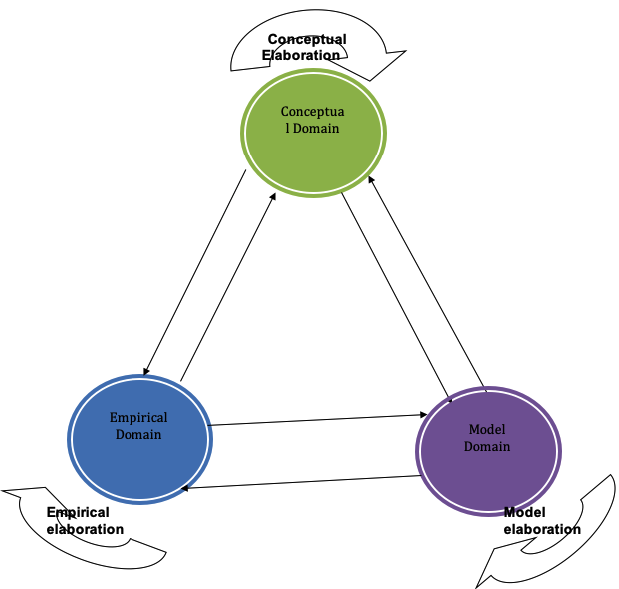
Conclusions
While companies are applying all possible strategies to avoid downbeats, it is normal that the competitive corporate markets may collapse, especially for those companies in the telecommunication and technology industry. SMM is an effective business performance approach, which may transform or help a company recover from its decline in global markets. Therefore, in the analysis of issues affecting it, the BlackBerry Company should apply the SMM approach and thus come up with robust solutions to transform its decline in the telecommunication industry. In developing the business performance model, the mnemonic COTWOE is important in identifying major aspects and concepts, as well as a means of integrating them effectively in the business system.
References
Anderson, D., Bryson, J., Richardson, G., Ackermann, F., Eden, C., & Finn, C. (2006). Integrating Modes of Systems Thinking into Strategic Planning Education and Practice. Journal of Public Affairs Education, 12(3), 265-293. Web.
Hicks, J. (2012). Research, no motion: How the Blackberry CEOs lost an empire. Web.
Kotiadis, K. (2007). Using soft systems methodology to determine the simulation study objectives. Journal of Simulation, 1(3), 215–222. Web.
Kravchenko, V. (2013). Using Process Analysis and Modelling in an Integrated Problem Solving Approach to Business Performance Improvement. International Journal of Advances in Management and Economics, 2(5), 49-62. Web.
Miller, H. (2013). Blackberry CEO to make $55.6 million if he sells company. Web.
Reed, G. (2006). Leadership and Systems Thinking. Web.
Williams, B. (2005). Soft Systems Methodology. Web.
Wilson, B. (2008). Soft Systems Methodology: Conceptual Model Building and Its Contribution. London: John Wiley & Sons. Web.